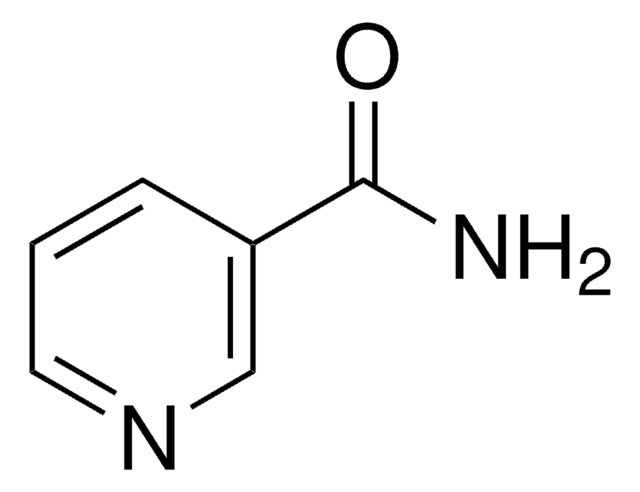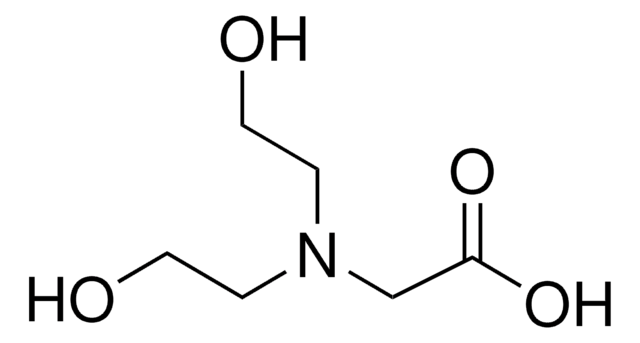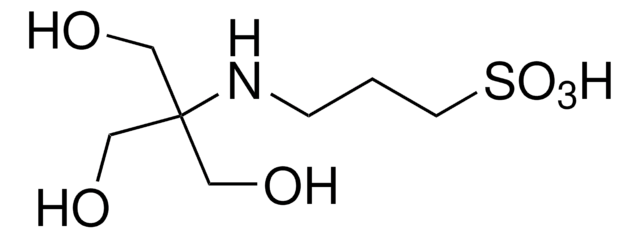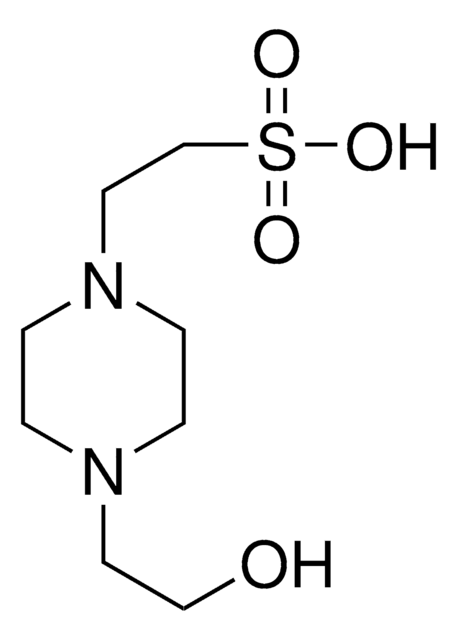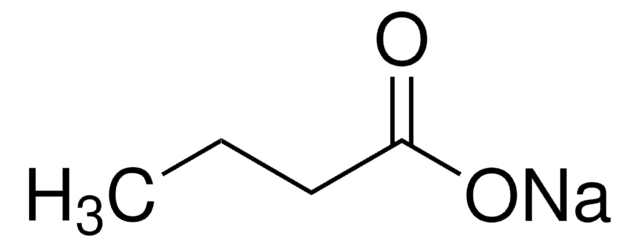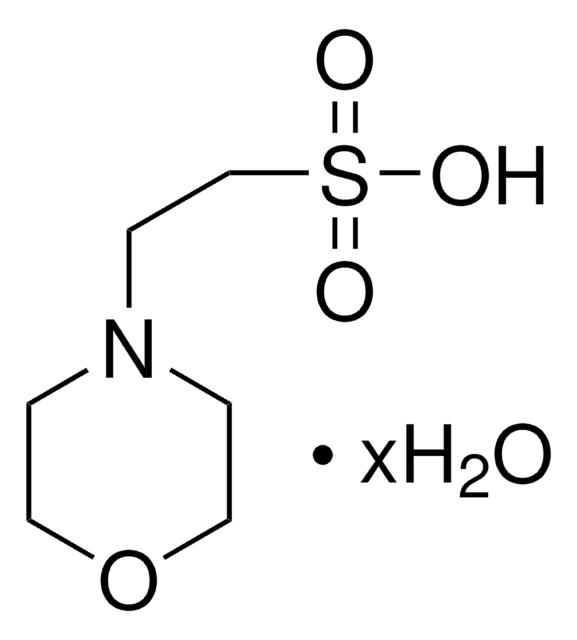Recommended Products
product line
BioUltra
Assay
≥99.5% (T)
form
powder or crystals
impurities
insoluble matter, passes filter test
ign. residue
≤0.1%
loss
≤0.1% loss on drying, 20 °C (HV)
pH
4.0-5.5 (25 °C, 1 M in H2O)
useful pH range
7.6-9.0
pKa (25 °C)
8.3
solubility
H2O: 1 M at 20 °C, clear, colorless
anion traces
chloride (Cl-): ≤50 mg/kg
sulfate (SO42-): ≤50 mg/kg
cation traces
Al: ≤5 mg/kg
As: ≤0.1 mg/kg
Ba: ≤5 mg/kg
Bi: ≤5 mg/kg
Ca: ≤20 mg/kg
Cd: ≤5 mg/kg
Co: ≤5 mg/kg
Cr: ≤5 mg/kg
Cu: ≤5 mg/kg
Fe: ≤5 mg/kg
K: ≤50 mg/kg
Li: ≤5 mg/kg
Mg: ≤5 mg/kg
Mn: ≤5 mg/kg
Mo: ≤5 mg/kg
Na: ≤50 mg/kg
Ni: ≤5 mg/kg
Pb: ≤5 mg/kg
Sr: ≤5 mg/kg
Zn: ≤5 mg/kg
λ
1 M in H2O
UV absorption
λ: 260 nm Amax: 0.070
λ: 280 nm Amax: 0.040
SMILES string
OCCN(CCO)CC(O)=O
InChI
1S/C6H13NO4/c8-3-1-7(2-4-9)5-6(10)11/h8-9H,1-5H2,(H,10,11)
InChI key
FSVCELGFZIQNCK-UHFFFAOYSA-N
Looking for similar products? Visit Product Comparison Guide
Application
Legal Information
WGK
WGK 3
Flash Point(F)
Not applicable
Flash Point(C)
Not applicable
Personal Protective Equipment
Certificates of Analysis (COA)
Search for Certificates of Analysis (COA) by entering the products Lot/Batch Number. Lot and Batch Numbers can be found on a product’s label following the words ‘Lot’ or ‘Batch’.
Already Own This Product?
Find documentation for the products that you have recently purchased in the Document Library.
Our team of scientists has experience in all areas of research including Life Science, Material Science, Chemical Synthesis, Chromatography, Analytical and many others.
Contact Technical Service